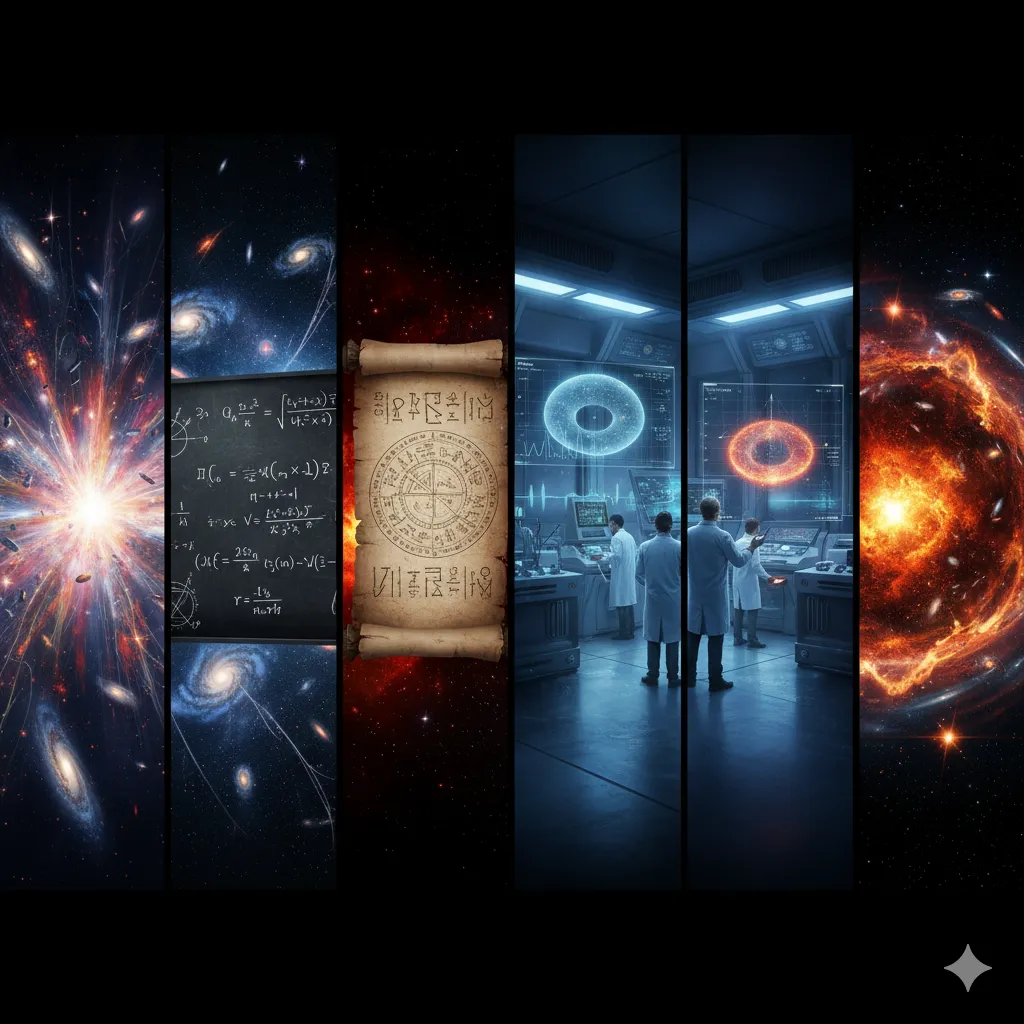
For centuries, apocalypse was the domain of prophets and poets. Then science entered the conversation. And the prophecies started to sound less like myth and more like physics.
In the 19th century, thermodynamics introduced a concept that would redefine humanity's understanding of endings. Entropy. The measure of disorder in a system. And according to the second law of thermodynamics, entropy always increases.
Which means the universe is winding down.
Stars burn through their fuel. Energy disperses. Heat dissipates into the void. Eventually, every reaction that can occur will have occurred. Every star will have died. Every black hole will have evaporated. And the universe will reach a state of maximum entropy.
Heat death. A universe where nothing moves. Nothing changes. Nothing exists except cold, empty space.
It is not an explosion. Not a dramatic collapse. Just a slow, inevitable fade into nothingness.
For over a century, this was the dominant scientific narrative. The universe began with the Big Bang. It will end with the Big Freeze. Expansion without end. A one-way journey into oblivion.
But then quantum mechanics arrived. And everything changed.
Quantum physics revealed that the universe does not behave according to classical rules. Particles can exist in multiple states simultaneously. Energy can emerge from vacuum fluctuations. Time itself may not be linear.
And if time is not linear, then entropy may not be irreversible.
In the late 20th century, physicists began exploring alternatives to heat death. One of the most compelling was the Big Crunch.
If the universe contains enough mass, gravity will eventually overcome expansion. The galaxies will stop moving apart. They will slow. Reverse. And fall back toward each other.
The universe will contract. Faster and faster. Galaxies will collide. Stars will merge. Space itself will compress.
And eventually, all matter, all energy, all of existence will collapse back into a singularity. A point of infinite density. Just like the one from which the universe began.
But unlike the heat death scenario, the Big Crunch does not end there.
Because if the universe can emerge from a singularity once, it can do so again.
The Big Bounce.
This is not science fiction. It is a legitimate hypothesis in cosmology. Proposed by physicists like Martin Bojowald and Abhay Ashtekar, it suggests that the universe undergoes an endless cycle of expansion and contraction.
Big Bang. Expansion. Big Crunch. Bounce. Repeat.
Each cycle potentially lasting trillions of years. Each iteration of the universe slightly different from the last. But the process itself eternal.
Sound familiar?
It is the same model described in the Hindu Vedas. The same cycle encoded in the Kabbalah. The same rhythm of creation and dissolution found in every ancient cosmology.
The universe expands like a breath exhaled. Then contracts like a breath inhaled. Over and over.
Modern physics is beginning to confirm what the ancients have been saying for millennia.
But there is more.
In 1998, observations of distant supernovae revealed something unexpected. The universe is not just expanding. It is accelerating.
Dark energy. An unknown force pushing space apart at an ever-increasing rate. If this continues, the Big Crunch may never happen. Instead, galaxies will drift so far apart that they disappear beyond the cosmic horizon. Stars will burn out in isolation. And eventually, even atoms will be torn apart.
The Big Rip.
A scenario where the fabric of space itself is shredded. Not a slow fade. Not a gradual collapse. A violent unraveling of reality.
But even this may not be the end.
Because quantum field theory suggests that vacuum is not empty. It is seething with virtual particles. Constantly emerging and annihilating. If the universe reaches a state of true vacuum decay, a bubble of lower-energy space could spontaneously form and expand at the speed of light, annihilating everything in its path and replacing the current universe with a new one governed by different physical laws.
A reset. At the quantum level.
And then there is the cyclical model proposed by physicists Paul Steinhardt and Neil Turok. In their framework, the Big Bang was not the beginning. It was a transition. A collision between higher-dimensional branes in a multiverse. And these collisions happen repeatedly. Creating new universes. New timelines. New realities.
Each model different. But the underlying theme the same.
The universe does not have one ending. It has many. And after each ending, something new begins.
This is not mysticism. It is mainstream cosmology.
The Quran states, The Day when We will fold up the heaven like the folding of a written scroll. As We began the first creation, We will repeat it.
The Vedas describe Brahman exhaling creation and inhaling it back into the void.
The Kabbalah speaks of the shattering of vessels and the return to Ein Sof.
And now, modern physics is arriving at the same conclusion.
The universe is not a story with a beginning, middle, and end. It is a cycle. A process. A pattern that repeats.
Which raises a profound question.
If this is not the first universe, then what came before? If this is not the last, then what will come after?
And most disturbing of all, if the universe has been cycling for eternity, then how many times has this exact configuration occurred?
How many times have you lived this life? Read these words? Contemplated these questions?
Because if time is cyclical, then everything that has happened will happen again. And again. And again.
The ancient texts warned of this. Eternal return. The same events. The same choices. The same outcomes.
Nietzsche called it the heaviest burden. The idea that every moment repeats infinitely. That nothing is ever truly new.
But what if it is not a burden? What if it is the design?
Because if the universe cycles eternally, then existence itself is not fragile. It is indestructible.
You are not racing toward oblivion. You are part of an infinite loop.
And the apocalypse is not the end.
It is the reset button.